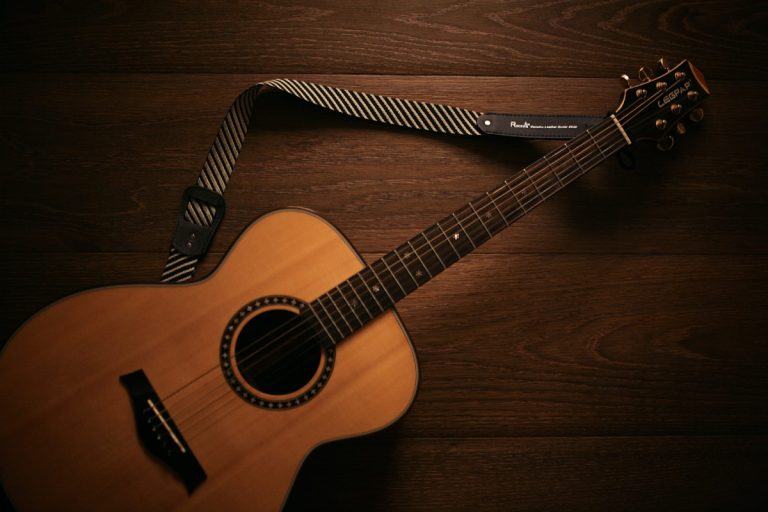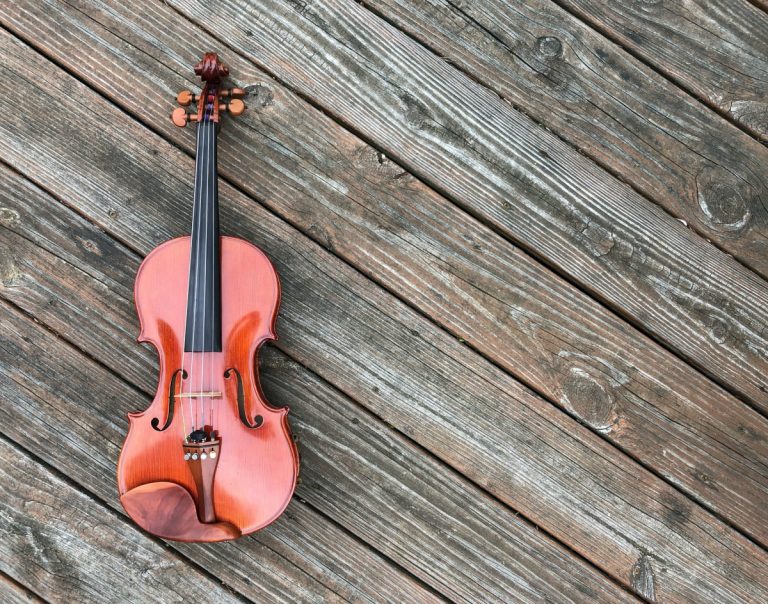Mastering mandolin chords is fundamental to being able to play well. The mandolin’s unique sound makes it an essential instrument in genres such as bluegrass, folk, and Celtic music. When creating melodies and harmonic progressions, it’s really important to understand the fretboard and how to play chords accurately.
In this article, we’ll explore the basics of mandolin chords and how you can master them. We’ll also discuss some popular chord progressions and how to use them to create memorable compositions.
So, let’s grab your mandolin and start strumming!
Introduction to Mandolin Chords
Before jumping into more complex chord stuff, you should get acquainted with the most popular mandolin chords and learn how to read them. The mandolin has different chord shapes that can be played on different strings in standard tuning.
Tuned symmetrically, the mandolin has double strings to provide a fuller sound and longer resonance. The mandolin chord diagram visually represents its fretboard with chord symbols indicating which notes and strings to fret.
The Mandolin Chord Diagram
(insert image)
Basic Mandolin Chords for Beginners
Playing beginner mandolin chords yourself is a great way to start learning the instrument and even play along with your favourite tunes.
The good news is that some easy two-finger and open chords require minimal effort from your left hand. These include G, C, D, A, and E chords, which believe it or not, make up most songs and their progressions. You can also practice by strumming to recorded songs to get a good sense of rhythm and see how a few chords can make up a whole song.
How to read mandolin chord charts
Reading mandolin chord charts can seem daunting at first, but with a little practice, it becomes second nature.
The chord charts show the finger placement for each note on the fretboard. Each dot on the chart represents a note corresponding to a string and fret on the mandolin.
The top line of the chart represents the thinnest string, while the bottom line represents the thickest string.
The numbers on the chart indicate which fret to press down and play. The X symbol means not to play that string at all.
5 Tips for Improving Your Mandolin Chording Technique
1. Start with Basic Chords: Before moving on to more complex chord progressions, make sure you have a solid foundation of basic chords. Practice your G, C, D, and A chords until you can smoothly transition between them.
2. Use the Correct Technique: Make sure you’re holding open strings on your mandolin correctly and using the correct finger placement when chording. Your thumb should be positioned on the back of the neck, and your fingers should be curved over the fretboard. Make sure you’re pressing down firmly enough on the strings to get a clear sound but not so hard that you’re straining your fingers.
3. Practice Slowly at First: When learning a new chord progression, it’s important to start slowly and gradually increase your speed. Begin by practising the chords slowly, making sure each note is clear. Once you have the chord progression down, gradually increase your speed until you can play the progression smoothly and consistently.
4. Work on Your Timing: Make sure you’re hitting each chord on the right beat and that your strumming pattern is consistent. Practice playing along with a metronome to improve your timing.
5. Experiment with Different Chord Progressions: Once you have a solid foundation of basic chords, don’t be afraid to experiment with different chord progressions. This can help you develop your creativity and take your chording technique to the next level.
3 Best Budget-Friendly Mandolins for Beginners
Hola! Music HM-3TS A-Style Mandolin
GOOD SOUND AND WORKMANSHIP
Perfect For: beginners
Features:
- 8-string traditional A-style Mandolin
- Maple top, back, sides and neck, with adjustable compensated Rosewood bridge
- Adjustable Truss Rod inside the neck – wrench included
Pros:
- With 20 silver nickel frets, chrome-plated open-gear tuners and tailpiece
- Has a black ABS pickguard and white ABS binding around the body, neck and head
Cons:
- The tuning heads can be difficult to adjust
The TedScore: 7.5/10
Kentucky KM-150
HIGH-QUALITY MANDOLIN AT AN AFFORDABLE PRICE
Perfect For: beginner and intermediate players
Features:
- Built with Solid German spruce top gives you clean articulation and a crisp, bright tone
- Designed with Solid Alpine maple back and sides for extra punch
- Has a Slim Alpine maple neck for comfortable, easy action
Pros:
- Choice tonewood fingerboard ensures silky smooth playability
- High-gloss sunburst finish creates traditional beauty and lustre
Cons:
- May not project as well as more expensive mandolins
The TedScore: 9/10
Rogue RM-100A A-Style Mandolin
GREAT VALUE FOR MONEY
Perfect For: beginners
Features:
- The teardrop shape is popular among beginners and more affordable than F-style mandolins.
- Maple neck and rosewood fingerboard are well-polished and provide comfort to players
- Chrome tuning machines and an adjustable compensated rosewood bridge make the instrument easy to handle and maintain
Pros:
- Well-built and looks more expensive than it is
- Produces well-rounded, deep, and resonant sounds,ideal for playing bluegrass and other genres
Cons:
- The original strings with the instrument are not very good and must be replaced
The TedScore: 8/10
Mandolin Chords: Key Takeaways
Congratulations! You’ve taken the first step towards learning how to play the mandolin by diving into the world of chords.
It can be daunting at first, but by familiarizing yourself with the different chord diagrams and practising regularly, you’ll soon be easily strumming along to your favourite songs.
Remember that learning any instrument takes time and patience, but the result is a skill that will bring you joy and fulfilment for years. Keep practising, stay curious, and don’t be afraid to seek guidance from a teacher or fellow mandolin player as you continue on your musical journey.
Happy strumming!
Before you go…
If you’re serious about playing the mandolin, tuning your instrument is another skill you must have! Want to learn how to do it? Jump into the next article to learn more!
Tuning A Mandolin (article still in progress in Asana)
FAQ’s
What are the 3 basic mandolin chords?
The three basic chords to start with are G, C, and D, which only require using 1 or 2 fingers and will allow you to play various songs immediately.
Is a mandolin harder than a guitar?
No, mandolins are not harder to learn to play than guitars, as they only have four sets of strings and are more melody-based, but learning to hold the double strings and getting used to the close frets may take a little time and patience, especially if you have larger hands.
What are the four chords on a mandolin?
On a mandolin, the four basic chords are G major, D major, A major, and E major, which can be played in various positions up and down the neck of the instrument.





